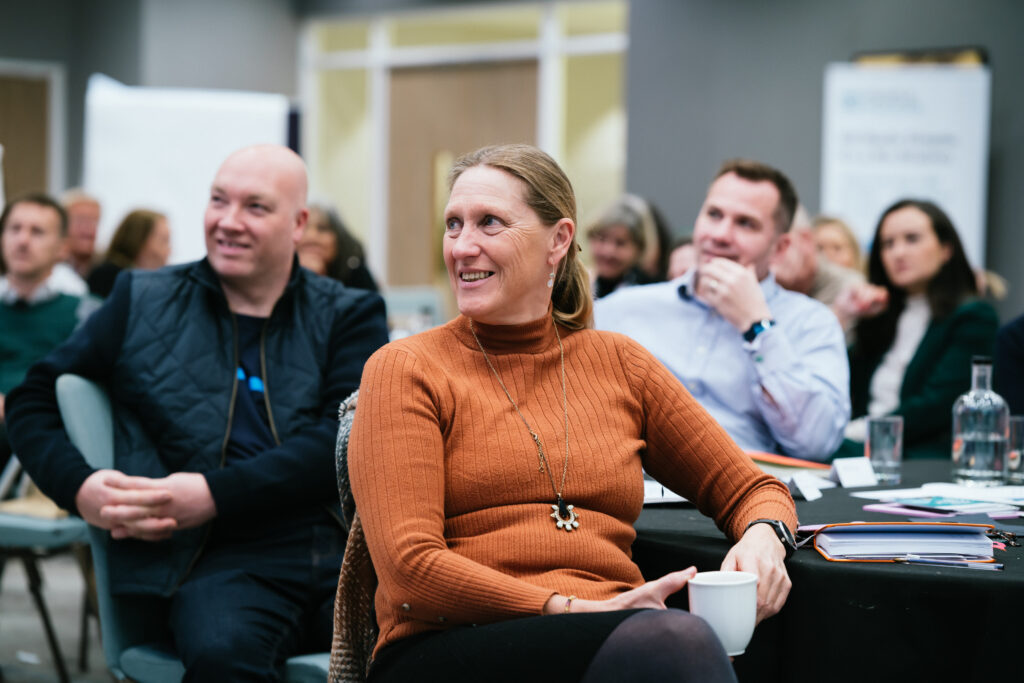Five reasons why rapidly growing businesses need an experienced HR Director
Are people the real key to unlocking growth? People Director Neil Edwards explains how businesses can get on the right track and turn people problems into powerful solutions for growth
There are many reasons that a business might fail to grow. But if the market you are operating in is healthy, your product offering is good and you understand your target market – chances are, the key factor holding you back will be your people.
Perhaps that’s to do with the management team dynamics, or the attraction, development, and retention strategies in place, or simply because you have the wrong people in the wrong places in the business. Or maybe your business vision and values are simply not being understood clearly, so they are not played out by the wider team. Whatever the end result, people problems are often the root cause of many business issues, and sometimes it’s almost impossible to see where the solution lies from within.
Many businesses are opting to bring in external resource to address issues like this, choosing to deploy an experienced People Director tactically to get the right mix of investment versus impact. Obviously, I am biased, but the difference this can make to a mid-market business is really significant.
5 ways to move your business forward with a people-centric approach
Here are five ways in which an expert People Director can help owners of smaller businesses address these issues and move forward:
1.Delegating responsibility and decision making. A lot of business owners find it difficult to relinquish or share control over their business and want to continue to be involved in every single decision. But ultimately, this holds the business back, as I’ve previously discussed in more detail. Without addressing this issue, there is a risk of the business being held back and becoming stuck in existing ways of working which won’t enable future growth.
2. Right people, right skills, right seat. It may be that someone in your business is no longer the right fit for the job they are doing, they might have outgrown their role or even have the potential to do more / different things. In some cases, they are no longer the right fit for the business now at all. Leaders often take the path of least resistance when deciding whether to move people into new roles or move someone on, but this ultimately holds the business back as a result.
A People Director will challenge you to do what’s best for the long-term interest of the business. We will help you to create a roadmap of where your business is heading, the goals you want to achieve, and by creating a people plan aligned to your business plan, highlight the skills and talent needed to help get you there. We can help navigate these difficult situations tactfully, while giving you the confidence you are doing the best by your people and complying with employment rights and regulations.
What our clients have found beneficial is the objectivity we bring to these situations making them less personal, while ensuring compassion and understanding throughout the process. If managed well, you build positive engagement and improve productivity as people are excited about a new role, development to progress and a new challenge, and for exiting team members to happily shake hands and move on. As one door closes, another can open.
3. Shining light on difficult areas. An experienced HR Director can not only shine different lights on the implications of different decisions but can also bring alternative perspectives to the business owner. In fact, that’s exactly what we do in our initial diagnostic exercise when first working with a new client.
When I go into a company I interview management, mid-management and people at the coal face. I ask them what makes the business successful and crucially, what holds it back? People often say similar things but aren’t always able to say them to the people who matter. We can be that conduit between employee and business owner by collecting information anonymously – and reflecting those truths upwards bringing about a more meaningful systemic shift as a result.
The important thing is to create a plan of action off the back of this insight that both leverage the strengths across the team and helps overcome any challenges. There may be issues your team might be best placed in developing some solutions, will show them you are listening and value their input. It helps build trust, confidence and engagement across the business.
For example, there could be inconsistencies in flexible working policies causing bad feeling, people who feel unappreciated, senior managers creating issues with communication bottlenecks, or newly promoted managers who are struggling with the responsibilities and skills required for their new roles. We can identify these issues and put the right measures in place to resolve them, not just for the short-term, but as ongoing systems and processes to make the business future-ready and geared up for growth.
4. Bringing the right people in. The type of people you recruit into an organisation are crucial to its success; and a bad hire can be extremely disruptive. We help you plan and recruit for what you will need in the future, rather than what is needed now. We also look at the skillset of the senior team and where there are gaps and opportunities. Building the senior team is not always about replicating your strengths; diversity in leadership teams is a good thing.
So don’t limit casting your net just to people in the same industry, choose people for what they can do, not just what they’ve done already. As well as skills, think about the characteristics you need in the leadership team to work. Leaders build a business in their own image. But you also need diversity in your team. For example, if you’re a very decisive leader you might want a more considered thinker who might take a wider set of factors into account. Balance is key, and a good question to ask yourself is ‘can you work together?’.
5. Recruit to values rather than skills. This is always best in the long term. Skills are trainable, whereas values aren’t. Similarly, look for qualities that are important to you. For example, entrepreneurs are typically very resilient people. Getting that resilience into the team is hard – and it’s a big ask to instil it in someone. Of course, investing in the personal as well as professional development of your team is vital, and helping every individual to understand their impact on those around them can help with this, but to a great extent, these traits are what will determine the success of your teams, the communication flow, and the effectiveness and productivity of the business as a whole.
Make sure you are crystal clear on what you are as an organisation, that your mission and purpose are fully defined and, along with your values, are easy to communicate. When you recruit, you can look for alignment in your candidates.
It’s been said before, but people really are the greatest asset of any organisation – but they can also be the most complex element to manage well. Getting the right experts in to help align your people is no different to getting the right technical expertise for your product or service development: it’s a necessary and valuable part of the overall puzzle. And when you can access that expert help on a flexible, part-time basis to suit your teams and your budgets, it’s always a win-win.
If your business is affected by any of the issues discussed here, why not give People Puzzles a call and find out what part-time, strategic HR can do for you? Visit our website at www.peoplepuzzles.co.uk or call us on 0345 646 5021.



